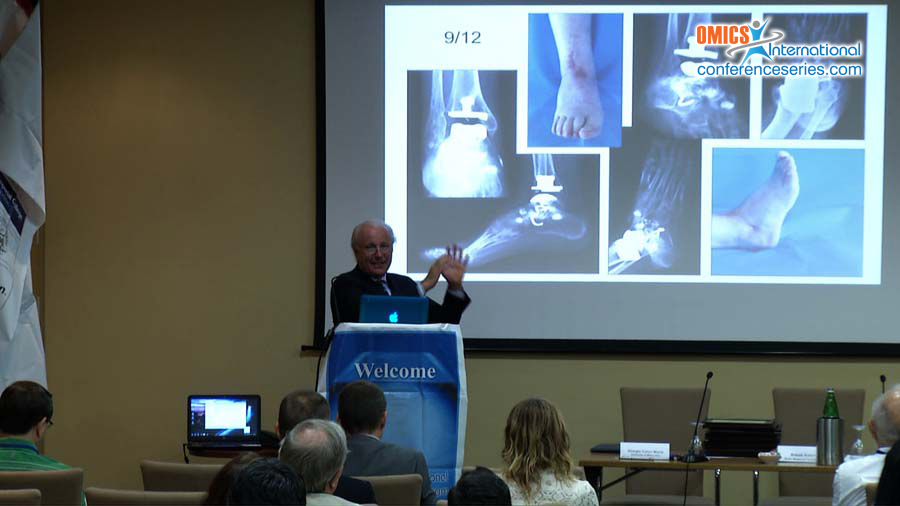
Giorgio Calori Maria
University of Milan
Italy
Title: From regeneration to substitution: Algorithm of treatment of non-unions and bone defects
Biography
Biography: Giorgio Calori Maria
Abstract
Non-union and bone defects of long bones are difficult complications treating fractures. We propose a new classification and a new strategy that could give significant information to the orthopaedist for a good management of these complicated cases and permit to create comparable study groups for research purpose. In 2008 we published a new classification for nonunions: the Non-Union Scoring System (NUSS). The NUSS doesn’t consider only the radiographic aspects of the non-union but take in consideration all the risk factors that contribute to this complication analyzing the whole patient (bone quality, primary injury, number, invasiveness and adequacy of previous interventions, soft tissues status, ASA grade, clinical infection status, smoking status, use of drugs, blood test, diabetes). All the factors included in the scoring system have an impact on the complexity and difficulty of treatment of any nonunion. The NUSS recognizes four group of complexity:score from 0 to 25 should be considered a straightforward nonunion and should respond well to standard treatments; usually the problems is mainly biomechanic; the more common treatment is choosing a different system of fixation. score from 26 to 50 should require more specialised care; usually the problem is both biological and mechanical. The treatment require the correction of the fixation associated with a biological stimulation obtained with CEMP, ESWT or biotechnologies such as mesenchimal stromal cells or growth factors or scaffold in monorail therapy. score from 51 to 75 require specialised care and specialised treatments; it’s a complex problem characterized by a impairment of both biological and mechanic conditions, usually is required the resection of the nonunion and consequently a bone defect must be treated. Next to traditional treatments, such as bone transport with external fixator, autologous iliac‘s crest grafts or microvascular fibulas graft, in this situation is indicated the use of biotechnologies (cells, scaffold and growth factors) according to the principles of the “biological chamber” and the “polytherapy”. score from 76 to 100 may be candidates for the primary amputation, arthrodesis, prosthesis, o mega-prosthesis depending on the severity of the loss of substance and the anatomical localization. We think that a “ladder strategy” based on the complexity of patients that starts from reconstruction and ends with substitution of the affected limb could be a good option in these difficult cases in order to return these patients to function.

